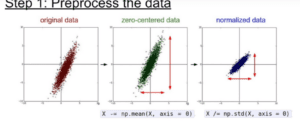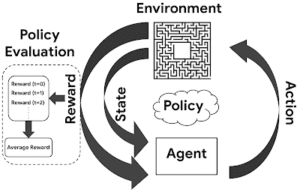Why Lean Practices Are Failing Public Sector Efficiency
Public service leaders, there is a growing inefficiency hiding in plain sight. It is not about budgets, staffing shortages, or public complaints. This problem runs deeper—it wastes government resources while pretending to improve them.
What Is Toolheadery? The Problem With Pseudo-Lean in Government
Toolheadery is the reckless application of manufacturing-based Lean principles in public service, creating bureaucratic busywork instead of real service improvements.
It starts the same way every time:
- A Lean consultant from manufacturing arrives.
- They treat government services like a factory with forms.
- They introduce waste-cutting measures and performance dashboards.
- But nothing actually improves.
Examples of Pseudo-Lean Inefficiencies in Public Service
Tracking “Motion Waste” in a Policy Department
Toolhead: We need to cut unnecessary movement.
Sophie (Senior Policy Officer): But we write reports.
Toolhead: Exactly. How many times do your eyes move across the screen? Can we reduce that?
Hunting for “Transportation Waste” in Digital Services
Toolhead: We must reduce how far information moves.
James (Public Sector IT Specialist): It is an email.
Toolhead: Yes, but does it really need to be sent?
Instead of solving problems, Lean becomes its own inefficiency.
- More time is spent justifying work than doing it.
- Dashboards fill up with meaningless performance indicators.
- Public services become more focused on “efficiency” than actual service delivery.
This is the toolhead trap—where Lean stops being a solution and becomes the bottleneck.
The Real Public Service Crisis: Understanding Failure Demand
To understand why pseudo-Lean does not work in public service, it is essential to discuss failure demand.
John Seddon, in Systems Thinking in the Public Sector, explains that government services face two types of demand:
- Value Demand – The demand public services exist for, such as processing permits, providing healthcare, and handling tax returns.
- Failure Demand – The demand caused by failures in the system, including lost applications, follow-up calls, incorrect bills, and citizens being transferred multiple times just to get an answer.
Failure demand is preventable waste. Yet in many public services, it makes up the majority of workload.
How Pseudo-Lean Creates More Failure Demand
Toolhead: We need to speed up how quickly you handle service requests.
Emily (Frontline Government Service Worker): That will not fix why people are calling in the first place.
Toolhead: If we make calls faster, people will be served more efficiently.
Emily: Or we could solve the problem so they do not need to call at all.
Toolhead: That… was not in the framework.
Instead of eliminating failure demand, toolheads create more of it.
- They do not ask why citizens have to call back.
- They do not fix the root causes of errors.
- They do not redesign work to eliminate unnecessary bureaucracy.
Instead, they push the same flawed solutions:
- Make workers handle calls faster.
- Hire more staff.
But nothing actually improves.
- The real issue is not how fast work gets done—it is how work is designed.
- Public services do not need speed—they need smarter workflows that prevent failure demand from happening in the first place.
Public Service Is Not a Factory—It Needs a Better Approach
Government services are not production lines—they need a public sector-specific framework for waste reduction.
Toolhead: I have a great idea—let’s restructure management to increase efficiency.
David (Public Sector Executive): How will that fix our service delays?
Toolhead: We will move reporting lines, redefine job roles, and add oversight.
David: Will that reduce failure demand?
Toolhead: No, but it will look more efficient.
Too often, public service inefficiencies are blamed on management structure.
- Leaders rearrange teams and add oversight layers, but the fundamental problems remain.
- Reorganizing a broken system only moves failure demand around—it does not fix it.
Instead of adjusting reporting lines, leaders must address:
- Why services fail the first time.
- Why citizens have to follow up on issues.
- Why bureaucracy gets in the way of real work.
The problem is not hierarchy—it is design.
The real way to improve public services is to design out failure demand.
- Identify the reasons citizens have to call back.
- Fix the root causes of complaints.
- Ensure services work right the first time.
Because when tools replace thinking, we do not remove waste—we create more of it.
Work With Us to Fix Public Service Efficiency
It is time to rethink improvement in the public sector.
Before launching another efficiency initiative, leaders must ask the right question:
Are we fixing the system—or just making bad processes move faster?
The biggest waste of all is doing the wrong thing, faster.
At Consuledge, we help public sector leaders eliminate failure demand, redesign broken workflows, and implement real, lasting improvements—without pseudo-Lean distractions.
Contact us today to discuss how we can help your organization eliminate waste, streamline services, and improve real outcomes.
Further reads:









2 Comments
Your article helped me a lot, is there any more related content? Thanks!
Your point of view caught my eye and was very interesting. Thanks. I have a question for you.